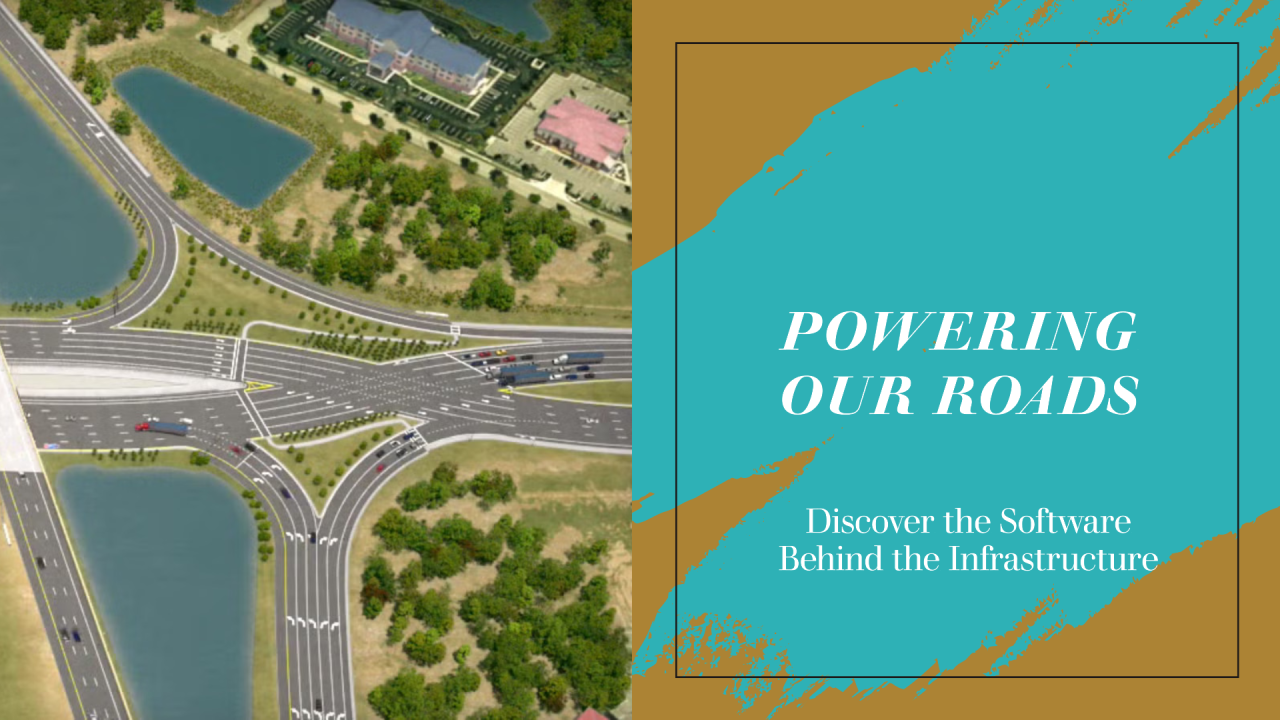.svg)
.svg)

The roads we travel on every day are more than just asphalt and concrete. They're meticulously planned and engineered marvels, ensuring safe and efficient movement of people and goods. But have you ever stopped to consider the silent heroes behind these vital transportation arteries? We're talking about the powerful software tools that empower road design professionals to translate vision into reality.
Here at ABC Trainings, we're passionate about empowering the next generation of road design specialists. In this blog post, we'll delve into some of the essential software programs used in road design, highlighting their functionalities and how they contribute to a successful project:
These industry giants take center stage in the road design world. Imagine creating intricate 3D models encompassing everything from the terrain itself to drainage systems, complex intersections, and even road signage. InRoads/OpenRoads Designer and Civil 3D make this a reality. They provide a comprehensive toolbox for engineers to meticulously design the entire roadway.
For those intricate road plans, detailed profiles, and precise cross-sections, MicroStation steps in. This robust software offers a powerful drafting and modeling environment, allowing engineers to bring their design vision to life with exceptional precision.
Efficient drainage systems are crucial to prevent flooding and ensure road safety. Specialized software like NCHRP Hydraulic Toolbox, HY-8, or Culvert Design System empowers engineers to analyze and design drainage systems that effectively manage stormwater runoff.
Traffic flow and capacity analysis are critical aspects of road design. Here, software like HCS (Highway Capacity Software) comes into play. It helps engineers analyze traffic patterns and ensure the designed road network can accommodate projected traffic volumes. Additionally, traffic simulation software like VISSIM or SimTraffic allows engineers to create virtual traffic simulations, testing different design scenarios and identifying potential bottlenecks before construction begins.
Beyond Efficiency: The Advantages of Design Software
These software programs aren't just about streamlining the design process. They offer a multitude of benefits:
Investing in Your Road Design Journey
At ABC Trainings, we understand the importance of equipping aspiring and experienced road design professionals with the necessary skills to navigate this ever-evolving field. We offer a comprehensive range of training programs focused on these critical software applications. From in-depth tutorials to industry-recognized certifications, we have everything you need to take your road design career to the next level.
Ready to pave your path to success in road design? Visit our website (link to your website) to explore our training programs and unlock your full potential in this dynamic field!
Copyright © 2025 ABCTrainings - All rights reserved